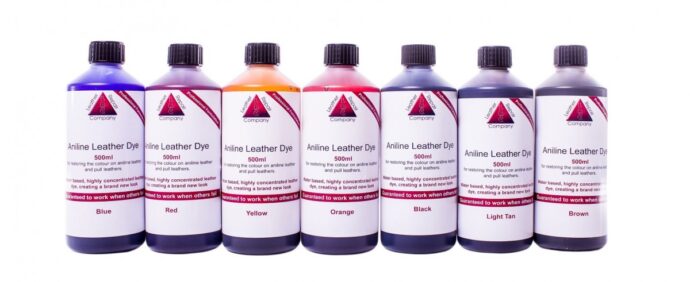
A history-loving doctor on Sermo has launched a Page called Medical History Tour! His page is dedicated to exploring places, persons and events of interest in the history of medicine, seeking out the intersections of medicine and humanity. In today’s post he details the storied history of sulfanilamide.
The dawn of antimicrobial therapy involved crude efforts at treating parasites. Bacterial infections were well described but therapeutically untouchable—survival was a matter of luck. This began to change between the First and Second World Wars. Between phage therapy in the ’20s (made famous through the fictional anti-hero Dr. Arrowsmith), and penicillin in the 40’s (which made Dr. Fleming a true hero), is the story of sulfanilamide.
The arc of this story is a brilliant purple line reflecting the role of the colorful coal tar derivate aniline. It delineates a path from: a curious English teenager (Perkins), the German dye industry; the ‘blue-fingered’ doctor Paul Erhlich (who invented antimicrobial “chemotherapy”); the miracle of sulfanilamide (developed by the unsung Dr. Domagk); the Pasteur Institute which trumped the German innovators; and the rise to power of the American FDA.
I give here enough information pique the interest and refer you to source material.
Sweet Aniline
Aniline (aminobenzene) is an aromatic (stinky) hydrocarbon which can be derived from coal tar and modified to make any of many colorful chemicals commercially valuable as dyes. The potential of anilin was best appreciated in England by Hoffman, whose student Perkins found a beautiful purple dye in the residua of a test tube he used in search of new antibiotics. Engineering enhancements and disregard for patents spawned a juggernaut—the German dye industry: BASF, Bayer, Hoechst, CIBA-Geigy etc.
Man with the blue fingers
Before Erhlich became the father of drug design with his milestone arsenic-based treatment for syphilis, he tried, and failed, to use synthetic dyes to treat trypanosomiasis. But he did succeed—brilliantly—at extending the work of his cousin, who was the first to use dyes to stain bacteria. Erhlich used methylene blue to stain tissues in vivo and other dyes to identify blood cells, leading to the discovery of the mast cell and a rich progeny of blood cell stains such as the Wright’s stain, familiar to every hematologist in the last 100+ years.
Intellect and Industry
The most colorful episode in this whole story arc has to be Dr. Gerhard Johannes Paul Domagk (1895–1964). As a German pathologist and bacteriologist in the era of the burgeoning dye industry in his country, he was well poised for the success that comes of mixing intellect and industry. (He was the Director of the Bayer—as in aspirin—Institute of Pathology). In 1939 he won the Nobel Prize for the discovery of Sulfonamido–chrysoidine. Known as Prontosil), it was the first commercially available antibiotic and the progenitor of the drugs that turned the tide in the war against bacterial infection, especially from strep.
This medical advance was no more welcome than by the armies of the world, where infections often killed more soldiers than did the enemy. The Nazis forbade Domagk from accepting, as they were resentful of the criticism from the 1935 Peace Prize winner—a German pacifist. In any case, his greatest reward was that the drug saved his daughter from an arm amputation due to infection. Later the Nazis would conduct controlled trials of sulfanilamide on prisoners purposely wounded for study.
Au contraire
The scientific path of discovery for this miracle drug began in 1908 when a grad student prepared the molecule. It was incorporated into the literature of dye chemistry. Domagk that showed that a combination of a dye and sulfanilamide was antimicrobial. In short order, the fiercely competitive, and French, Pasteur Institute showed that the dye moiety was irrelevant to its effectiveness.
We now know that it works by competitive inhibition of reactions involving para-aminobenzoic acid, needed to produce folic acid. This will kill bacteria, but not mammals, not directly anyway, as mammals get their folic acid from the diet, not synthesis. Sulfa drugs came to America in force after WWII. It was as popular as it was unregulated. There was a ‘demand’ for a liquid form of the drug, achieved by the Massengil company by dissolving the powdered antibiotic in diethylene glycol—anti-freeze. Lethal kidney failure ensued.
“During September and October 1937 this drug was responsible for the deaths of more than 100 people in 15 states, as far east as Virginia and as far west as California. The drug and the deaths led to the passage of the 1938 Food, Drug, and Cosmetic Act, which increased FDA’s authority to regulate drugs.”
And then…
And here the story does not end. The dye industry eventually came to Toms River. New Jersey. The potential to do harm is chronicled in the book Toms River—a Story of Science and Salvation. Domagk’s story is the subject of Demon Under the Microscope.
As usual I will be posting related content on MedicalHistoryTour.com, with book links.
Please leave a comment, message me on Sermo or to info@medicalhistorytour.com.
Are you a physician? Login or join Sermo to leave a comment on the Medical History Tour Page!














